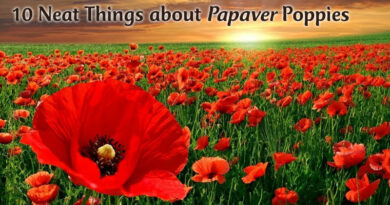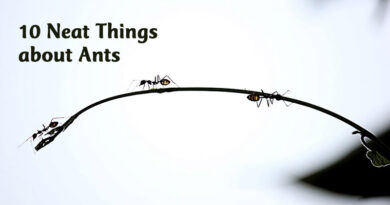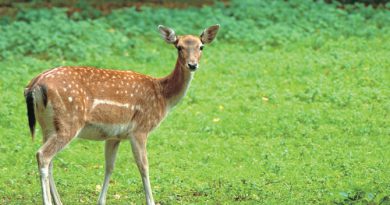About Blue Jays
1. They’re not really blue, you know.
Blue jays look blue. You’d swear they are blue, a very striking, and intense blue kind of blue. But they are not. In fact, their pigment, like that of many birds, is brown or white. What the eye sees, however, is the light refracted off their feathers in a way that creates the illusion of blue. Well, the sky isn’t blue either. And for the same reason.
2. The wicked, wicked ways of blue jays.
Blue jays have been tarred with a dirty brush for many years, accused of robbing other nests, of murdering and eating baby birds, of hogging the feeder and of stealing shiny things from your yard. Now it is true that like many others of the corvidae family, jays are attracted to all that glitters, and they do rob the occasional nest as do many other birds, but only one per cent of their diet consists of their fellow birds. Whether they hog the feeder will be discussed further on. What do they eat? Seeds and acorns, mostly, and insects such as grasshoppers, caterpillars and beetles (22 per cent). They like acorns and have been seen to stash away as many as 3,000 to 5,000 acorns in a single season.
3. Does wicked go with smart?
Blue jays are pretty canny birds. Like their cousins the crows and magpies, they have great curiosities. They can also carry a lot of food at one time, stuffing two to three acorns in the gular pouch in their esophagus, one in their mouth and one more in their bill: up to five at one time. One of the smarter things they do is for some of them to fly south for the winter – not all, and not every year. Only about 20 per cent of them take the trek and nobody really knows why or what stimulates this move, but hey, do 20per cent of us go south for the winter? (We wish!)
4. Feed me, Darling, and I will be your love.
Blue jays exhibit some interesting courtship behaviour that some of us might envy. While she is incubating the eggs, he will sometimes feed her on the nest. Sometimes,to get away from it all for a moment, they will fly to a nearby tree, where she will assume the begging position of a juvenile and he will feed her. It must be a bonding thing, because they are monogamous and mate for life. They talk while courting, making a dove-like Kloo-kloo-kloo sound as they hop from branch to branch.
5. He’s a homebody.
Male blue jays build the nest, taking not just found sticks, but living wood from small trees, often struggling to break off a particularly desirable twig. Frequently, he adds a final decorative and perhaps romantic touch of something white to the outside of the nest. He might as well make it homey: he and she live together for a long time. Blue jays in captivity have been known to live as long as 26 years and even in the wild they often survive as long as 17 years although the average life span is seven years. Maybe it’s because they are very selective about their food, choosing only acorns that have no fungus or insects or other infections. They stay with their young for as long as two months.
6. What’s that you say?
Blue jays are known for their loud, rasping call, but they are also capable of great nuance. They burble and murmur among themselves and with their young. They can also mimic predators, such as red-tailed and red-shouldered hawks, and often they use these calls to scatter fellow freeloaders from domestic feeders, lending weight to their reputation for greed. However, they may just be sending warnings of approaching predators. One thing we know is that they can use their voices in a special call to stimulate “mobbing”, the ganging up of a bunch of jays against an owl which might be taking up residence near a blue jay nest, for instance. They can also imitate cats.
7. Provincial bird.
Some Canadians appreciate blue jays more than others. The blue jay is the provincial bird of Prince Edward Island.
8. Good birdie. Kind birdie. Very much maligned birdie.
So is the blue jay the villain he is made out to be? Read this post from an observant blogger, who watched the following interaction between a blue jay and a woodpecker. The woodpecker, probably a fledgling, was having a hard time approaching a busy feeder and a cat dish that attracted many birds. Then along came a blue jay, which made a crow-like call and flew onto the feeder. Here is the rest of the tale in her own words:
“Almost immediately, the woodpecker flew down from the branches of the tree and landed directly beside the blue jay. Both of the birds looked around for a moment more, then the blue jay flew to the railing of the deck, still looking about. The woodpecker flew to the cat dish for the first time; it ate a few pieces of cat food, while the blue jay kept watch. When the woodpecker was done eating, both of the birds flew away together.
Since that first time, I have witnessed the same thing happen over and over. Always the blue jay comes first, looks for danger, calls to the woodpecker, who appears immediately, and then keeps a look-out while the woodpecker gets something to eat. Then they fly away together!”
9. Anting.
Blue jays are not alone in engaging in the behaviour known as “anting”. Some 250 species of passerines (birds that perch) are known to do the same thing. It is postulated that they do this to remove the formic acid from the ants’ acid sac before eating the ant. It has been postulated, too, that they do this to rid themselves of insects, mites, fungus and bacteria. Further, it has also been postulated that they do this to supplement their own preen oil. Some birds also do the same thing with millipedes, which have powerful defensive chemicals. Blue jays have also been seen to sit on top of an anthill and liberally dust their wings.
10. Not the bullies.
While blue jays are accused of being bullies, they are easily imitated by grey squirrels, woodpeckers, grackles and even mourning doves – who can blame them for mimicking the cry of a hawk in self defence? After all they are slow flyers with flying speeds of only 32 to 40 km/h as an average speed, leaving them very vulnerable to their own predators. If you want to attract them, build flat nest platforms 12 feet or higher. They like peanuts, but they are natural forest dwellers, preferring oaks.






